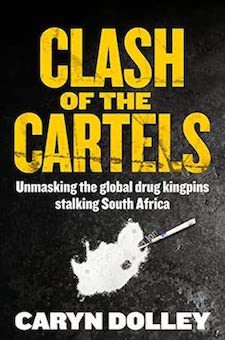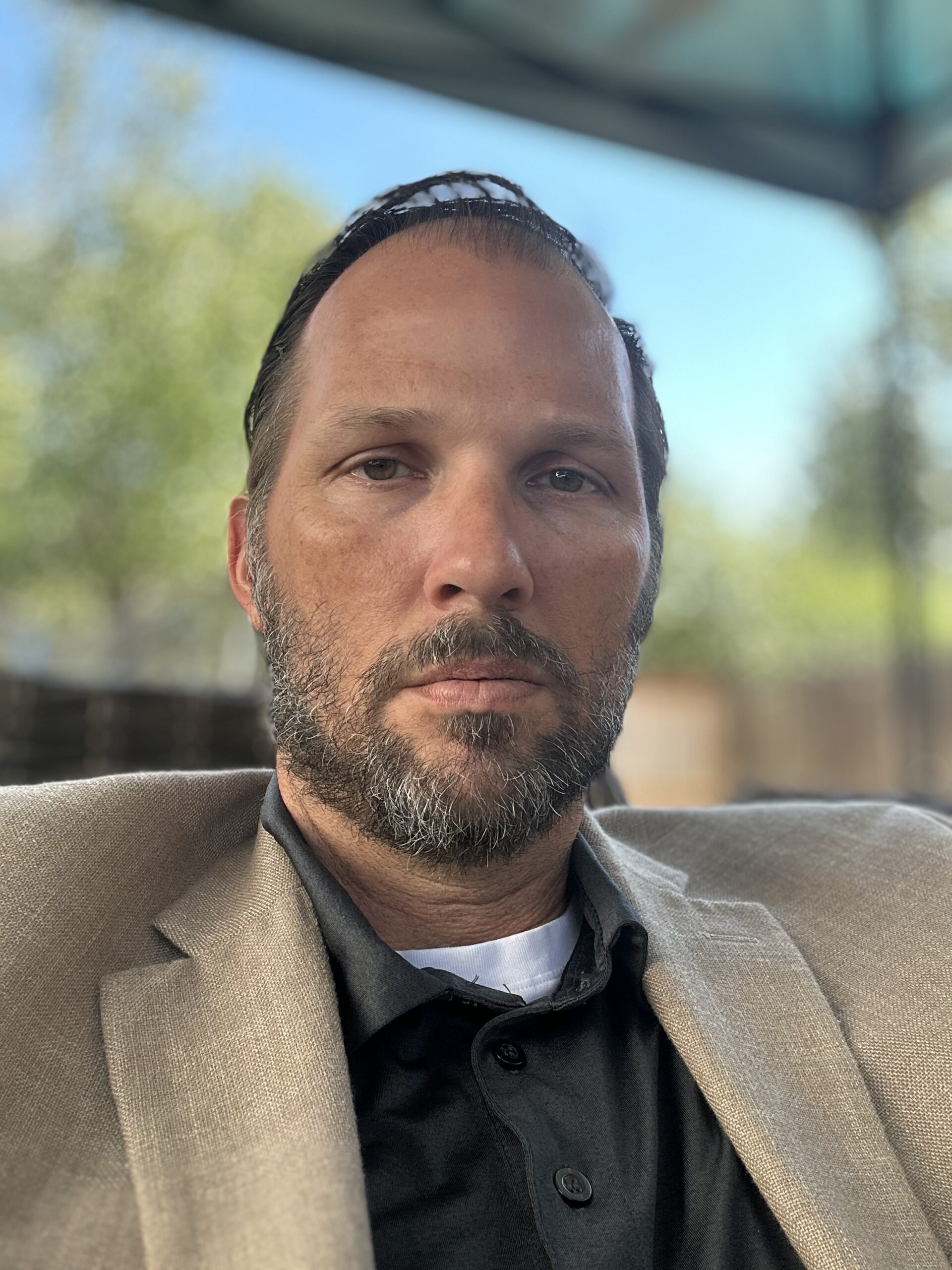SWJ El Centro Book Review − Clash of the Cartels: Unmasking the global drug kingpins stalking South Africa

SWJ El Centro Book Review − Clash of the Cartels: Unmasking the global drug kingpins stalking South Africa
John P. Sullivan

Caryn Dolley, Clash of the Cartels: Unmasking the global drug kingpins stalking South Africa, Cape Town: MAVERICK 451, 2022 [ISBN: 9780639708164; E-ISBN: 9780639708171, Kindle, 283 pages]
Illicit economic flows are the engine that fuels transnational organized crime. These illicit flows mix with gangs, cartels, mafias, corrupt government officials, espionage, and intrigue in many corners of the world. Some of the actors that benefit from transnational crime are well known, others are obscure and occult. All interact in the various spaces and flows of the illicit political economy. South Africa is a pivotal—albeit largely unknown—hub in the global criminal landscape. Caryn Dolley is a South African investigative journalist specializing in organized crime, drug trafficking, and corruption. She writes for the Daily Maverick and has been a reporter for the Cape Times and deputy news editor at South Africa’s News24. Clash of the Cartels is her third book examining the links between gangs, street crime, and global organized crime. Her previous two books, The Enforcers: Inside Cape Town’s Deadly Night Club Battles (2019) and To the Wolves: How Traitor Cops Crafted South Africa’s Underworld (2021), exposed the corrosive effects of corruption and collusion between politicians and the police with South Africa’s criminal underworld.
From Apartheid to Deviant Globalization
South Africa’s many gangs echo the development of criminal enterprises worldwide. The South African version however grew from the corruption and violence of the oppressive apartheid regime. Corrupt cops served both the regime and its adversaries, profiting and taking a piece of the [political] action for themselves. From that base, the gangs then exploited the corrupt presidency of Jacob Zuma (2009–2018) to expand the power and extend their reach. Zuma, a leader from the African National Congress (ANC) party, which came into power at the end of apartheid in 1994, was convicted of corruption in what South Africans call ‘state capture.’ State Capture in South Africa included plundering resources, endemic corruption, co-option of police and intelligence officials in service of corrupt party organs, and the erosion of democracy. The corrupt politicians and gangsters profited from a range of criminal enterprises including drug trafficking, extortion, and money laundering. The gangs also bult links with organized crime groups, arms dealers, and terrorists from around the world.
Playing by the Numbers to Links with D-Company
South Africa’s version of prison-street gang complexes, the ‘numbers gangs’—the 26s, the 27s, and the 28s are integral to South Africa’s criminal political economy. Based in the Western Cape they divide their focus with the 26s running the business side of things, the 27s serving as soldiers or enforcers, and the 28s, a ‘paramilitary structure,’ acting as the ‘political authority’ of the numbers gangs (p. 43). The 28 gang activities include murder, assault, theft, and drug trafficking, along with other more mundane crimes, in furtherance of their enterprise. Their drug portfolio includes trafficking and distribution of heroin, methamphetamine, Mandrax (methaqualone), and cannabis.
Other key players include the Western Cape gangs: Hard Livings and the Americans, which were once headed by Rashied and Rashaad Staggie, and Neville Herold respectively. All three of the once dominant gangsters were assassinated as part of their deadly trade. Hard Livings had links with Chinese gangsters (14K Triad), the Sicilian Mafia, and Colombian cartels. These are discussed in Chapter 1. Beyond traditional organized crime links, South Africa’s gangsters have also built links with terrorist-linked entities in India and Afghanistan. Here, heroin and Mandrax from India are the drugs of choice. But the deeper story is the link to Dawood Ibrahim Kaskar, the leader of the gangster cum terrorist group D-Company that epitomizes the Crime-terror nexus. D-Company was responsible for a 1993 series of bombings in Mumbai that killed nearly 260 and injured over 1,000 more. D-Company is believed to have a presence in South Africa. These links are discussed in Chapter 2.
The ANC, Politics, and Beyond
Chapter 3 discusses the links between the ANC, street crimes, and homicide. It also looks at transnational inks into Zambia, India, and Eswatini (formerly Swaziland). Drug trafficking routes are key here; however the resulting smuggling trade enables apartheid-linked cops to foment instability among political parties (including the ANC). Diamond smuggling was also added to the mix; so did police corruption as former members of the ANC armed wing uMkhonto we Sizwe allegedly joined their apartheid rivals in colluding with global criminal enterprises and challenging democracy. Crack cocaine also became a factor among Cape gangs. In Chapter 4, Dolley expands her aperture to document links between South African gangsterism and transnational criminal organizations (TCOs) in Dubai, Kenya, China, Mozambique and the US. Murders, Mandrax, and Money laundering predominate this thread. Links with al-Shabaab also come to light. As do links to China. The Western Hemisphere joins the storyline in Chapter 5 with a discussion of links between South African gangs and Cuba. This includes the Cuban TCO, El Jabao, which reportedly operates in the US, Cuba, and Mexico. Colombian cartels and cocaine also punctuate the recount. Brazil is the theme of Chapter 6. Here links to Brazilian gangs, the Comando Vermelho (CV or Red Command) from Rio de Janeiro and the Primeiro Commando da capital (PCC or First Capital Command) from São Paulo enter the scene. The PCC is expanding its reach from Brazil into Paraguay and beyond with South Africa part off that global expansion. Corrupt cops and a sea-borne cocaine trafficking route linking Durban to São Paulo funds small arms trade, human trafficking, terrorism, and mercenary action. Money laundering is a core component of this circuit.
The Balkans, Spies, Assassinations, Corrupt Cops, and Australasia
Links between organized crime and assassinations in Serbia and South Africa are explored in Chapter 7. The Serbian link also involves cocaine trafficking and, of course, violence and corruption. State capture (or reconfiguration) is a parallel both Serbia and South Africa share. Power struggles within the political systems and their intelligence or security agonies are also a common factor. In Chapter 8, we see the murders and mayhem expanding to Ireland, Canada, Moldova, China, and the US. The Kinahan crime cartel from Ireland trafficked in Chinese steroids as well as the cocaine trade and real estate-linked money laundering. They also operated in South Africa; these operations allegedly included assassinating rivals. Bulgaria is the focus of Chapter 9 where credit card fraud, diamond and drug smuggling are the province of former communist-era spies turned oligarch or gangster.
Chapter 10 looks at the role of the UK, Spain, Colombia, and Ireland in the global narco-networks and (Cocaine) market. Corrupt cops are seen here as enablers. Human and drug trafficking links with Lithuania, New Zealand, and Spain are examined in Chapter 11 while linkages to the US, Australia, Lithuania, and Italy are recounted in Chapter 12. An especially interesting case study of transnational police co-operation to penetrate encrypted underworld communications networks is also detailed in Chapters 12 and 13. The core role of the ‘Ndrangheta’s global network connection is also discussed. Here links to Australasia, by that Calabrian mafia are highlighted along with the role of Australian outlaw motorcycle gangs.
The global connections linking South Africa to the global illicit economic circuits are summarized in Chapter 14. To many, these links may seem surprising. But they are indeed a stark reality demanding global efforts to counter transnational organized crime.
Assessing the Contribution
Dolley does a stellar job in providing a detailed journalistic account of the links of a number of global organized crime groups to South Africa. South Africa’s geographic location combined with a fragile state, with a high incidence of corruption and gang violence. Makes it an ideal venue for facilitating the entire range of transnational criminal transactions. Dolley is a skilled investigative reporter and her recount here provides a solid foundation for understanding the range of South African criminal connections to the global illicit economic circuits. Her work is well documented, with endnotes available electronically. Despite this journalistic triumph, the work lacks deep foundation in theory. Of course, that theoretical exploration is the province of academics: criminologists, sociologists, and political scientists. Yet, that lack of theory does not limit the intrinsic value of this work. Clash of the Cartels provides excellent color commentary on the significance of South African organized crime. This text should be used to augment theoretical explorations by scholars and illuminate training for intelligence analysts and police investigating or formulating strategies for countering transnational organized crime.




